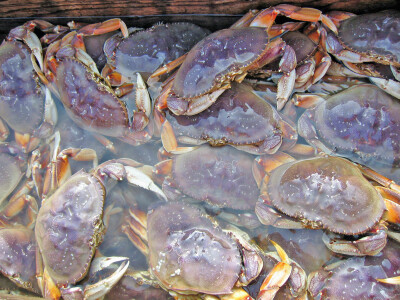By October 2021 petrale sole trawlers had landed 1,794 metric tons of a 4,115-metric ton quota, and at year’s end 2,870 tons had crossed the docks. Based on biomass surveys fisheries managers expect little change in the quota for 2023 and 2024.
With less than half of the year’s fish delivered in early autumn, the fleet worked to harvest more before the fish dispersed from the dense spawning schools that make for good tows.
In fall trawlers typically scratch along in the nearshore waters to haul up around 400 pounds per hour, and the fishing picks up to a several tons per haul but tapers off in January or February.
The story about what happens to the petrale when they’re offloaded to processors has been running more optimistic this year than last. The brunt of the catch moves fresh through domestic distribution, primarily to West Coast markets in San Francisco, Seattle and other cities with find dining restaurants.
With the widespread closure of restaurants last year much of the product wound up in cold storage holdings and processors. Now, much of that inventory has been liquidated and with the reopening of some restaurants, the flow of product appears to have reverted to pre-pandemic mode.
“It’s loosened up a little bit,” says Scott Adams, a plant manager with Hallmark Fisheries in Charleston, Ore. “Petrale sales have been pretty good.”
Adams notes that besides end sales to restaurants customers have been buying the fillets from the fish sections in their grocery stores.
“They like the butcher to fillet the fish and leave the skin on,” says Adams of the preferred product form.
The market situation has not been nearly as bright for other West Coast fish species that depend on export markets for sustenance, according to Adams.
“I think if you’re shipping to Europe or elsewhere it’s difficult because the cost has doubled, and there isn’t enough labor,” he says, adding that he and many others in the seafood industry have been operating with a third of their normal number of employees.
“There’s a lot of stuff lying around,” he says of frozen fish products that have been slow to leave the docks.







